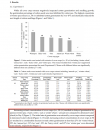Bassattackr
5 year old buck +
Jack,
Correct me if I'm wrong but I think rye, oats have the allelopathic affect from the get go. They will also germinate much earlier than 99% of warm season weeds still getting ahead of them. Discing may help destroy what is there but you are right in that it jumpstarts the process all over again..
I've only done the clover/cereal in the fall, never in the spring which is why I was curious if anyone else actually tried it.
Correct me if I'm wrong but I think rye, oats have the allelopathic affect from the get go. They will also germinate much earlier than 99% of warm season weeds still getting ahead of them. Discing may help destroy what is there but you are right in that it jumpstarts the process all over again..
I've only done the clover/cereal in the fall, never in the spring which is why I was curious if anyone else actually tried it.

